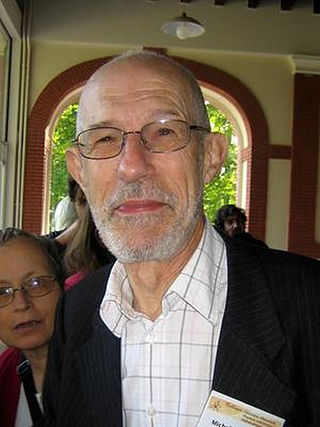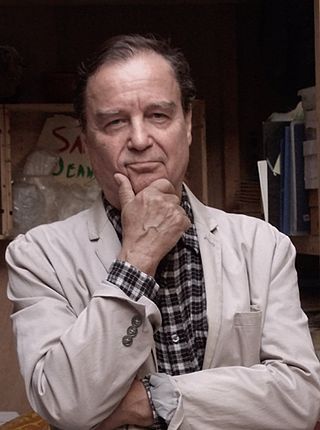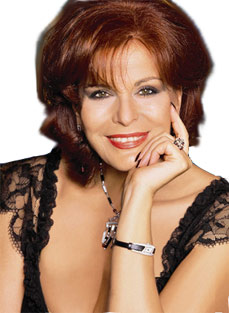
The 19th arrondissement of Paris is one of the 20 arrondissements of the capital city of France. In spoken French, this arrondissement is referred to as dix-neuvième.
Villette or Villettes may refer to:

The Parc de la Villette is the third-largest park in Paris, 55.5 hectares in area, located at the northeastern edge of the city in the 19th arrondissement. The park houses one of the largest concentrations of cultural venues in Paris, including the Cité des Sciences et de l'Industrie, three major concert venues, and the prestigious Conservatoire de Paris.
The Institut d'Astrophysique de Paris is a research institute in Paris, France. The Institute is part of the Sorbonne University and is associated with the CNRS Centre national de la recherche scientifique. It is located at 98bis, Boulevard Arago Il in the 14th arrondissement of Paris, adjacent to the Paris Observatory.

Paris Métro Line 7 is one of sixteen lines of the Paris Métro system. Crossing the capital from its north-eastern to south-eastern sections via a moderately curved path, it links La Courneuve–8 mai 1945 in the north with Mairie d'Ivry and Villejuif–Louis Aragon in the south, while passing through important parts of central Paris.

The Cité des Sciences et de l'Industrie or simply CSI is the biggest science museum in Europe. Located in the Parc de la Villette in Paris, France, it is one of the three dozen French Cultural Centers of Science, Technology and Industry (CCSTI), promoting science and science culture.

La Géode is a mirror-finished geodesic dome that holds an Omnimax theatre in Parc de la Villette at the Cité des Sciences et de l'Industrie in the 19th arrondissement of Paris, France.
The Prix d'architecture de l'Équerre d'argent is a French architecture award. This prize was launched in 1960 by "Architecture Française" magazine and its director Michel Bourdeau.

The Cité de la Musique, also known as Philharmonie 2, is a group of institutions dedicated to music and situated in the Parc de la Villette, 19th arrondissement of Paris, France. It was designed with the nearby Conservatoire de Paris (CNSMDP) by the architect Christian de Portzamparc and opened in 1995. Part of François Mitterrand's Grands Projets, the Cité de la Musique reinvented La Villette – the former slaughterhouse district.

Nizas is a commune in the Hérault department in the Occitanie region in southern France.
Events from the year 1926 in France.
The International Salon for Peace Initiatives is organized in the framework of the International Decade for the Promotion of a Culture of Peace and Non-Violence for the Children of the World (2001–2010) declared by the United Nations in 1998. Organized by the French Coalition for the Decade, it has been taken place in Paris every two years since 2004.

The Philharmonie de Paris is a complex of concert halls in Paris, France. The buildings also house exhibition spaces and rehearsal rooms. The main buildings are all located in the Parc de la Villette at the northeastern edge of Paris in the 19th arrondissement. At the core of this set of spaces is the symphonic concert hall of 2,400 seats designed by Jean Nouvel and opened in January 2015. Its construction had been postponed for about twenty years to complete the current musical institution la Cité de la Musique designed by Christian de Portzamparc and opened in 1995. Mainly dedicated to symphonic concerts, the Philharmonie de Paris also present other forms of music such as jazz and world music.

Zénith Paris is a multi-purpose indoor arena in Paris, France. It is located in the Parc de la Villette in the 19th arrondissement on the edge of the Canal de l'Ourcq. Its ability to seat up to 6,293 people makes it one of the largest venues in Paris. The closest métro and RER stations are Porte de la Villette, Porte de Pantin, and Pantin.

Michel Demazure is a French mathematician. He made contributions in the fields of abstract algebra, algebraic geometry, and computer vision, and participated in the Nicolas Bourbaki collective. He has also been president of the French Mathematical Society and directed two French science museums.

Jean-Marie Besset is a French contemporary playwright, translator and theater director.
Jérôme Deschamps is an actor, director and stage author, as well as a cinema actor and director associated with the Famille Deschiens troupe founded by Macha Makeïeff in 1978. In 2003 he was appointed artistic director of the Théâtre national de Nîmes, leaving that post for the equivalent at the Théâtre national de l'Opéra-Comique in June 2007, where he remained until 2015.

Jean-Max Albert is a French painter, sculptor, writer, and musician. He has published theory, books on artists, and a collection of poems, plays and novels inspired by quantum physics. He perpetuated experiments initiated by Paul Klee and Edgar Varèse on the transposition of musical structures into formal constructions. Albert has also created environmental sculptures using plants to create architecture.

The Association française pour l'information scientifique or AFIS is an association regulated by the French law of 1901, founded under the leadership of Michel Rouzé in November 1968. As a skeptical organisation, it has been a member of the European Council of Skeptical Organisations since 2001, and publishes the magazine Science et pseudo-sciences.

The Teissier affair was a controversy that occurred in France in 2001. French astrologer Élizabeth Teissier was awarded a doctorate in sociology by Paris Descartes University for a doctoral thesis in which she argued that astrology was being oppressed by science. Her work was contested by the scientific community within the context of the science wars, and compared to the Sokal hoax. Criticisms included the alleged failure to work within the field of sociology and also lacking the necessary scientific rigour for a doctoral thesis in any scientific field. The university and jury who awarded the degree were harshly criticised, though both they and Teissier had supporters and defenders.














